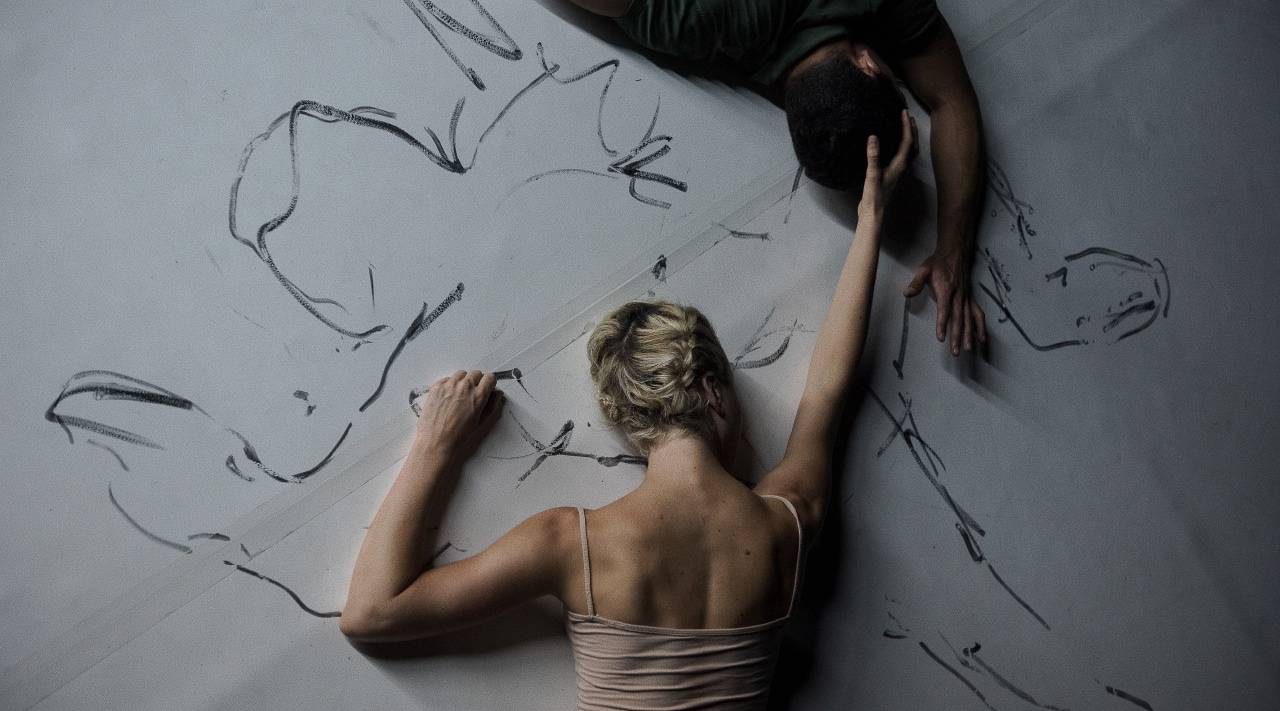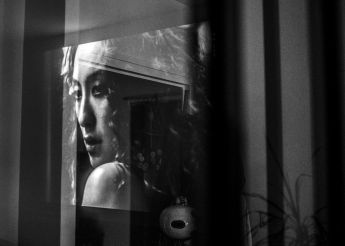For some, these bodies, frozen on the ground, may evoke death. But not for me. These bodies are like a verse or a squib, in a novel or a tale. Like a leap, this elongated position seems like a dance movement that might appear in the array of ballet dancers’ gestures.
The young woman’s hand outstretched to touch the head of this man in motion. His hand, a few inches off the ground, pointing in her direction; these movements produce strong feelings within me. It suggests palpitation on living bodies. When a dog sleeps deeply, and we cannot tell if it is breathing, our first reflex is to touch it to see if it is still alive.
From prison, I would say that touch is an essential link; a way to be in contact with the objects we use, to experience textures and clothes, to feel the books we love to read and which often create strong sensations and produce varying degrees of emotion.
Touch is essential for the survival of human beings and animals, but in a closed environment, it helps to remind us that we exist, since our birth, no matter where we are. Alas, we cannot touch animals in here. But feeling the hands of our children, of our families, and hugging them during visits keep us connected to the outside life, even if is only for a brief moment.
The clock that counts the hours as they fly by, follows the same rhythm as outside, except that in here, we are confined precisely by the time that passes; we want to touch the clock every day so that it moves faster.
Touch is the feeling of life, simply.






